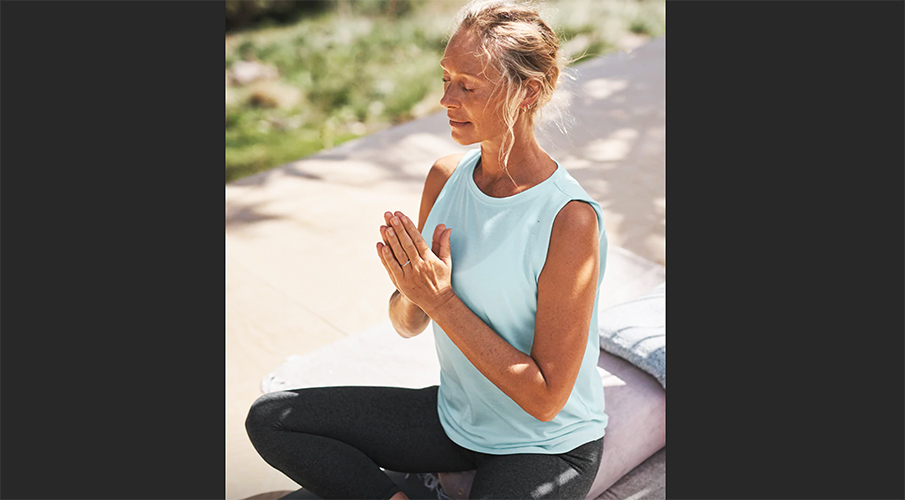<span style="color: #9c9c9c;">Gap Inc. reported a modest decline in sales at Athleta in the first quarter as online sales, boosted in part by the introduction of curbside pickup and virtual concierge service, helped limit the damage from store closures. Overall, reopened stores are showing an encouraging performance, particularly at Old Navy.
Sales at Athleta were down 8 percent in the first quarter. Store sales were down 50 percent while online sales grew 49 percent.
Gap Inc., which also owns the Gap banner, Old Navy and the Banana Republic. said in a statement, “Customer response to Athleta was strong given the values-driven active and lifestyle space the brand participates in as well as the brand’s deep customer engagement through its powerful omnichannel model.”
…
On its first-quarter conference call, officials at Gap Inc., Sonia Syngal, who became Gap Inc.’s CEO on March 23 after leading the Old Navy chain, said that as the company was “making good progress with momentum entering the quarter, led by Old Navy and Athleta.” But shelter in place orders resulted in the temporary closure of approximately 90 percent of its global store fleet starting on March 19.
As a result, sales in the first quarter were down 43 percent year-over-year, to $2.11 billion. Online increased 13 percent while store sales decreased 61 percent. Online delivered 40 percent growth in April, followed by over 100 percent growth in May.
Among other concepts, Old Navy Global’s sales in the quarter were down 42 percent; store sales were down 60 percent with online sales up 20 percent as online growth has accelerated. Gap said it expects the off-mall, strip real estate that makes up approximately 75 percent of Old Navy’s fleet to be an advantage as customers return to stores and expect traffic in these locations to ramp up more quickly than other formats.
“It’s still early days, but we’re encouraged by the trends we’re seeing, specifically the strong recovery at Old Navy, America’s second-largest apparel brand,” said Syngal. “We attribute this to Old Navy’s advantaged value proposition for the entire family and strength in relevant categories such as active, fleet and denim.”
Gap Global’s sales were down 50 percent in the quarter; store sales were down 64 percent with online sales down 5 percent. Gap brand’s performance prior to the pandemic was already being pressured by inconsistent execution of product and marketing messages but steady improvements in its online performance were seen in the quarter.
Banana Republic Global’s sales were down 47 percent; store sales were down 61 percent with online sales down 2 percent.
The operating loss came to $1.2 billion, including a $235 million non-cash inventory impairment charge. The company also absorbed a charge of $484 million to reduce the carrying amount of the store assets and the corresponding operating lease assets to their fair values, which have dramatically declined as a result of the pandemic. The company said that as part of its ongoing specialty fleet optimization efforts, it has undertaken a strategic review of its real estate portfolio to further advance its long-term strategic priorities that include a smaller, healthier fleet, particularly as it relates to its Gap brand and Banana Republic.
The net loss came to $932 million, or $2.51 a share, against operating income of $227 million, or 60 cents, a year ago
Liquidity-preserving measures taken during the quarter left Gap with $1 billion in cash on hand as of May 2, a bit more than it had a year ago. About half of the cash on its books at the end of the quarter came from drawing down $500 million on a credit line. Gap also stopped paying rent at many of its stores in a move that has prompted lawsuits from some of its landlords, including Simon Property Group.
Katrina O’Connell, CFO, said, “While our economics and our Old Navy and Athleta fleets are strong, our specialty store fleet has not been as profitable as we need it to be. So we’re seeking rent concessions for those stores that are well-positioned but cannot support the current rent structures and prioritizing closing those stores that simply have no role in our fleet portfolio with the majority being in the Gap brand. In short, our specialty store closure plans remain on track. We also will continue to consider new store openings largely for Athleta and Old Navy. Of course, we’ll do that quite thoughtfully and after considering the change in market conditions that result from the crisis.”
Stores are opening ahead of schedule. To date, about 1,500 stores, or approximately that’s 55 percent of its fleet, have reopened in North America, almost doubling its previously announced plan to reopen 800 by the end of May
…
Looking ahead, a sequential improvement from Q1 trends is expected in the coming quarters. In North America, reopened stores are already generating sales at nearly 70 percent of their performance last year, with particular strength at Old Navy. Online is also expected to continue to grow strongly.
Syngal concluded in her formal comments, “We believe our brands will be poised to take share based on the momentum we’re seeing with stores reopening and a sustained online acceleration, coupled with our dominant market position and growing categories, I’m excited by Gap, Inc.’s ability to win.”
Photo courtesy Athleta
















